Tom's Guide Verdict
Able to deliver excellent throughput across a home, the Netgear PLP2000 is today’s top performance dog for powerline extenders. While it doesn’t use much power and replaces the AC outlet it takes up, the PLP2000 lacks a monitoring utility program, comes with only 90-days of support and is one of the most expensive Powerline kits available. Still, if you’re looking for peak performance, this is the Powerline extender to get.
Pros
- +
Top performance
- +
AC passthrough outlet
- +
Two Ethernet ports
- +
Low power use
Cons
- -
Expensive
- -
No monitoring utility
- -
90-days of support
Why you can trust Tom's Guide
Max Throughput: 101.0 Mbps
Performance at 100 feet: 81.9 Mbps
Max Range: 775 feet
Size: 5.3 x 2.8 x 2.3 inches
Three/Two Prong Plug: 3
Ethernet Gigabit Ports: 2
Estimated Power Bill: $5.70 per year
Netgear’s PLP2000 can put high-performance data just about any place in your home with throughput that puts other powerline networking devices to shame while giving you an extra outlet to replace the wall outlet it covers. With gigabit connectivity, superb range and better performance than competing powerline extenders we've tested, the Netgear PLP2000 Powerline Extender is our favorite extender kit.
Although it leaves the others in the digital dust, the PLP2000 suffers from being among the most expensive powerline kits you can get, and only includes 90-days of support. It also lacks any way to monitor and configure the equipment.
Even with it's flaws, the Netgear's excellent performance makes it the top pick among the best powerline extenders you can buy. (Still confused? Check out our article Wi-Fi extenders vs powerline adapters: Everything you need to know to learn more.)
It’s expensive, but as our Netgear PLP2000 Powerline Extender review makes clear, it can put data where it’s never gone before.
Netgear PLP2000 Powerline Extender: Design and features
At 5.3 x 2.8 x 2.3 inches, the Netgear PLP2000 is a little smaller than the TP-Link TL-PA9020P, but three times larger than the tiny D-Link DHP-601AV. It has a replacement wall outlet to compensate for the one it covers, but its three-prong plug requires a grounded outlet.
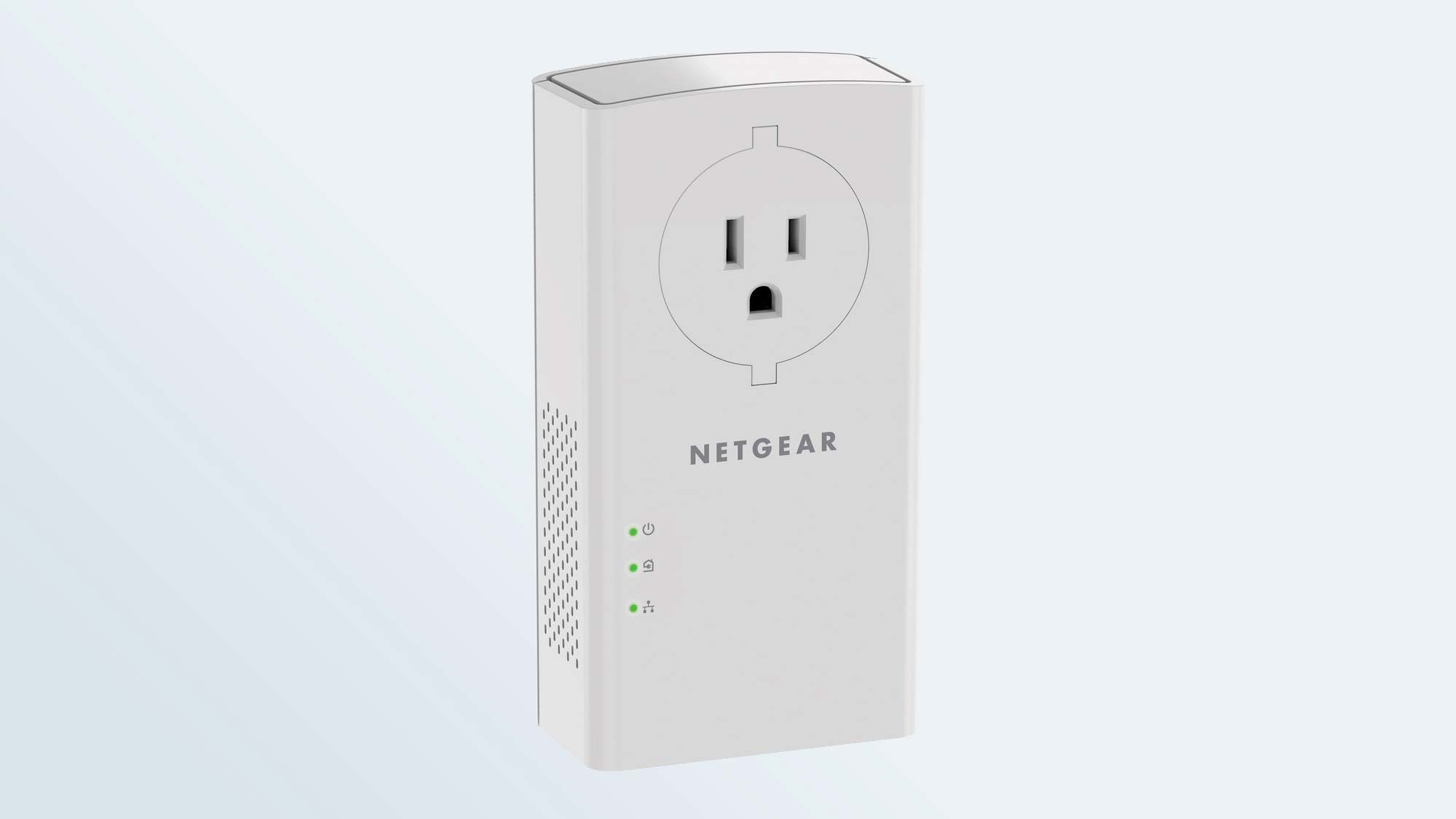
The white plastic PLP2000 has three LEDs upfront for power, powerline connection and Ethernet status that are much easier to see than the TL-PA 9020P’s side LEDs. On the sides of the adapter are holes for heat ventilation.
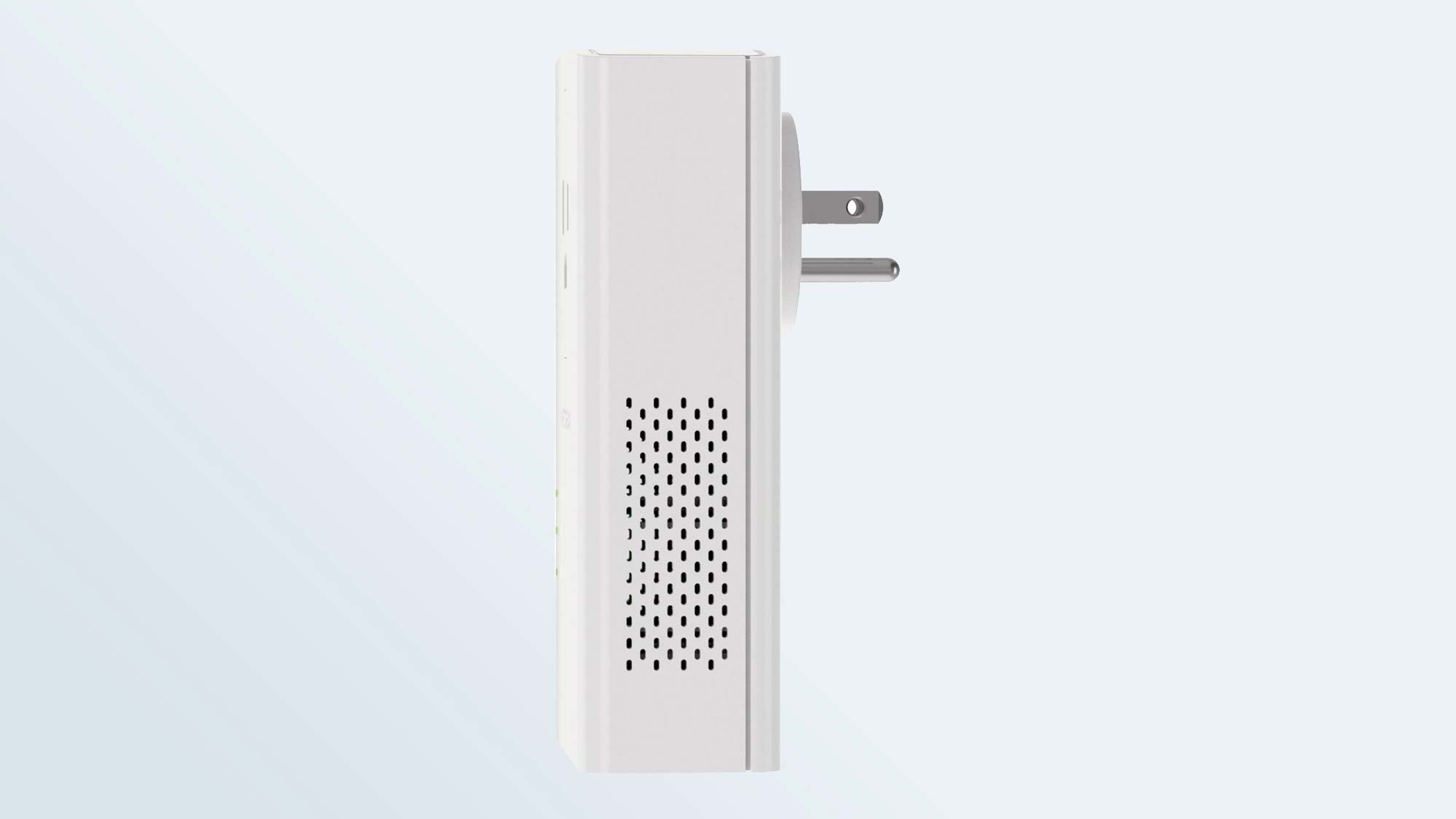
Along the bottom is a pair of gigabit Ethernet ports so the powerline kit won’t need a network switch to service two digital appliances, like a TV and computer. The Security button underneath can change the system’s 128-bit AES encryption keys.
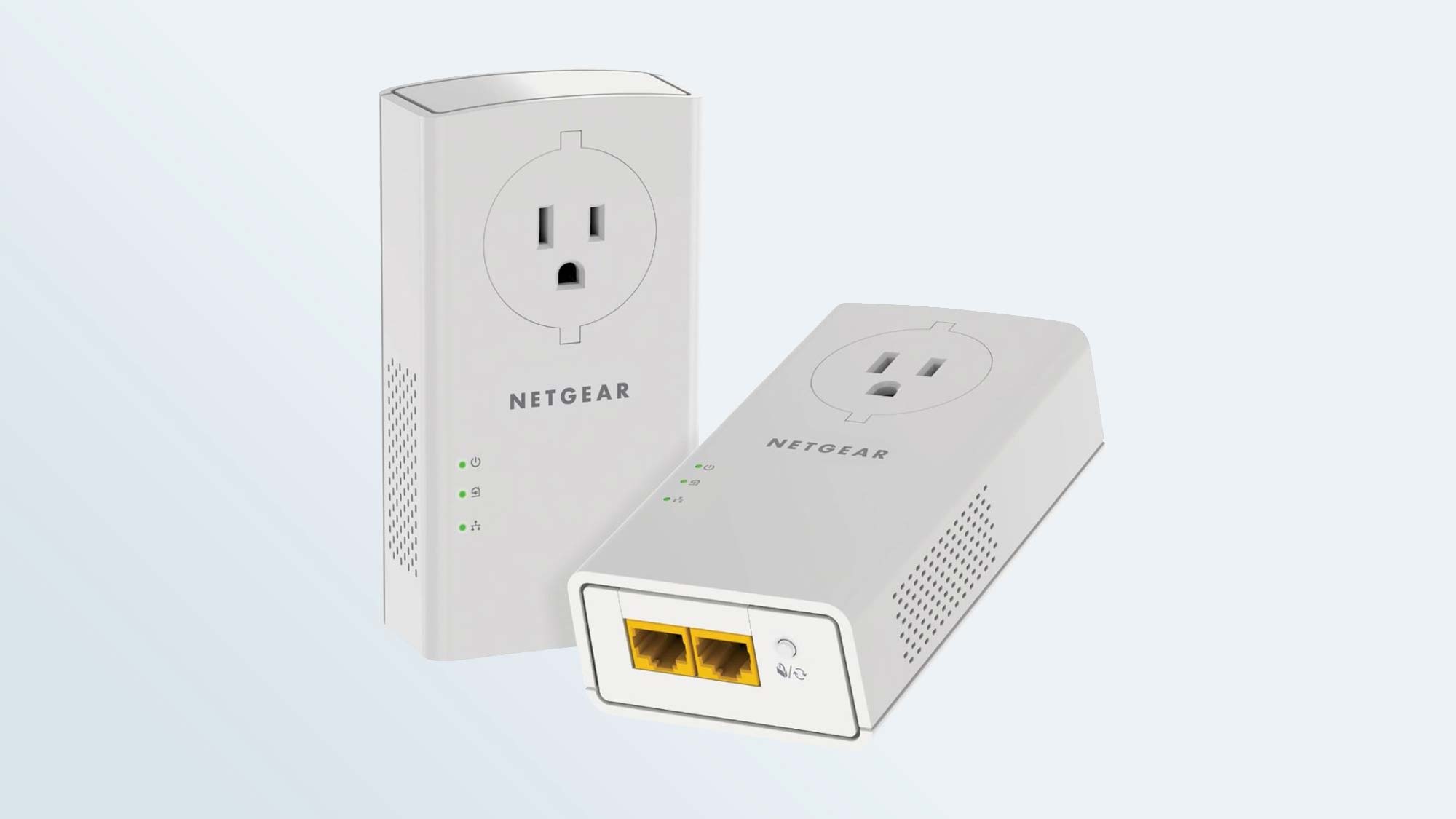
The Netgear PLP2000 uses the HomePlug AV2 standard and supports Multiple Input Multiple Output (MIMO) transfers so that many members of the family can be using it at once. To that the PLP2000 adds a noise filter on its AC outlet that allows you to plug an appliance into its AC outlet without worrying about interference interrupting the data flow. It tops out with a 2Gbps spec and can work with up to 16 powerline devices on a network, according to Netgear.
Netgear PLP2000 Powerline Extender: Performance
Like many of its peers, the PLP2000 is built around Broadcom’s BCM60500 chipset. The Netgear extender led the way in terms of performance with the ability to move a maximum of 101.0Mbps out of my home’s 200Mbps connection. This makes it the powerline kit to get for those who crave lots of data. In many cases, the Netgear's throughput was more than twice any of its competitors, putting it in a class by itself. By the 100-foot mark its throughput dropped to 81.9Mbps, still overwhelmingly the leader.
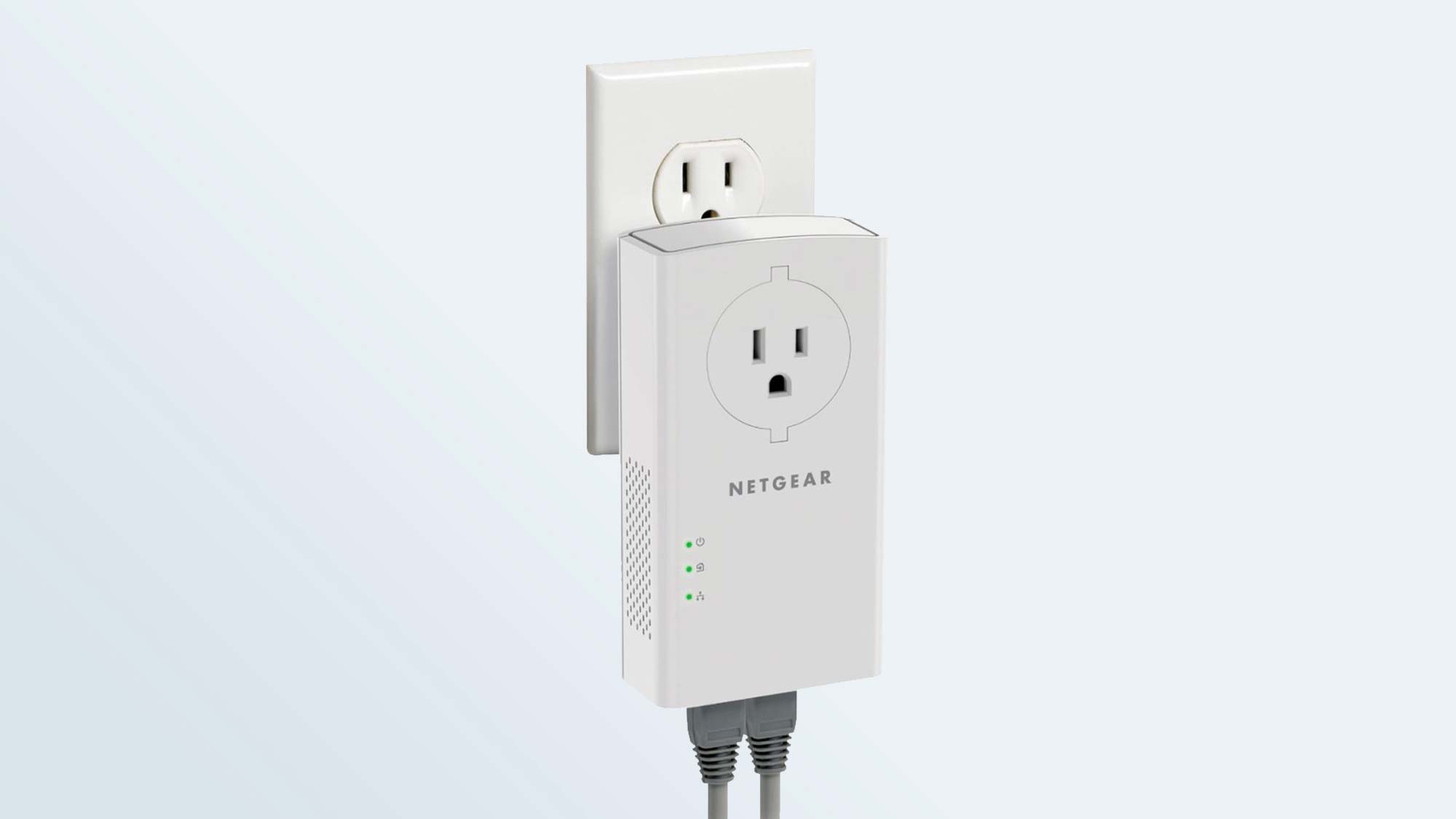
With a maximum range of 775 feet, the Netgear PLP2000 supplied 24.3Mbps to my previously unconnected garage, filling it with HD videos, online games and Web site journeys. The excellent speeds we saw at 100 feet stayed consistently high, but the category-leading performance only continued until about the 600-foot mark, where the TP-Link TL-PA9020P’s extended range took over the lead. The ability of the PLP2000 pair to stay online with 775 feet of cable between them was second best to the TP-Link TL-PA9020P’s 1,075 feet. The Netgear PLP2000 was also way ahead of the D-Link DHP-601AV’s 525-foot range.
The PLP2000 got a little warm during use and hit a peak temperature of 108-degrees Fahrenheit. The sender and receiver units used 3.7-watts each when moving data and 1.3-watts at idle. That translates into an estimated annual electricity bill of about $5.70, good but not in the same class as the stingy D-Link DHP-601AV.
Netgear PLP2000 Powerline Extender: Setup and software
After plugging both Netgear extender units in, it took a few seconds for the data to start flowing through the PLP2000 pair. Unlike the other extenders we tested, the Netgear comes with a preset pair of encryption keys, so the data flowing between the two units in the extender kit is always secure. You can change the encryption keys to a random set by pressing the Security button for a few seconds.
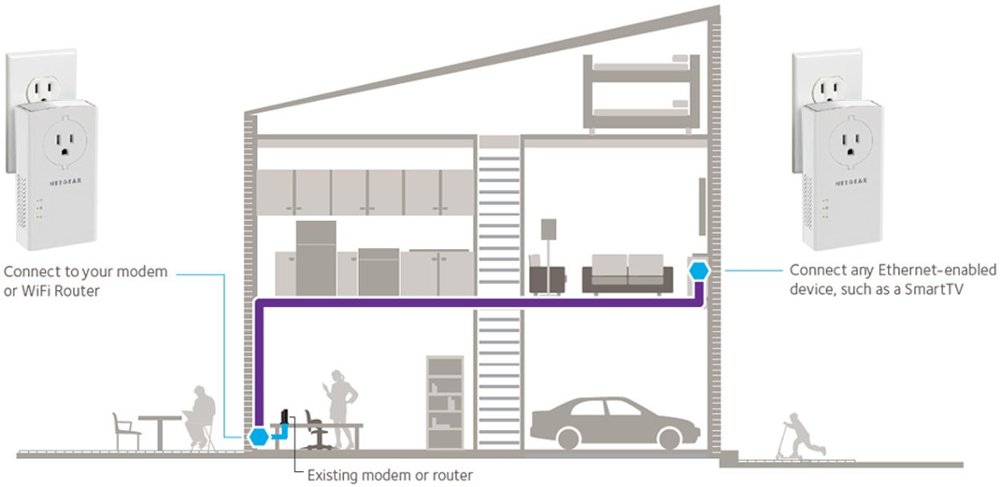
On the other hand, the PLP2000 lacks the Quality of Service (QOS) software and monitoring dashboard offered on the TP-Link TL-PA9020P. While Netgear offers tips, security help and an excellent manual, it falls short with a 1-year warranty and 90-days of technical support; competitors include up to three years of support and warranty on their extender kits. For the PLP2000, you’ll need to pay more to extend the coverage.
Netgear PLP2000 Powerline Extender: Verdict
If you need top performance from your powerline gear, look no further than the Netgear PLP2000 powerline extender kit. It not only pumps out the data faster than other powerline kits we tested, but has more than enough range to fill most homes with data.
While it’s $20 more expensive than the TP-Link TL-PA9020P, the Netgear PLP2000 is our top pick because it moves much more data than its competitors while using only a little electricity. That means that the device does its job well, but doesn’t cost a lot to use.
Netgear does offer a shorter warranty on the PLP2000, and provides only 90-days of support and lacks a monitoring and configuration utility. Still, with its ability to deliver high-speed data to different parts of a home, the PLP2000 is a great choice for satisfying the data hogs at your home.
Brian Nadel is a freelance writer and editor who specializes in technology reporting and reviewing. He works out of the suburban New York City area and has covered topics from nuclear power plants and Wi-Fi routers to cars and tablets. The former editor-in-chief of Mobile Computing and Communications, Nadel is the recipient of the TransPacific Writing Award.


